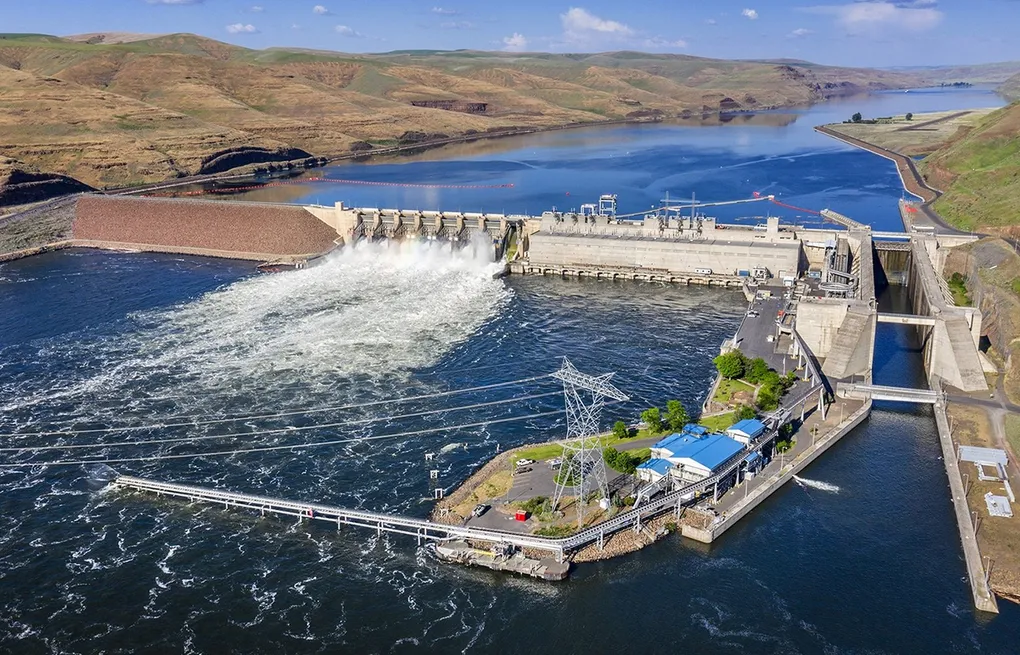Environmentally Smart or Socio-ecologically Misguided? The Controversial Nature of Hydroelectric Infrastructure on the Snake River
By Claire Farber, Environmental Studies ‘26
As fossil fuels prove to be unsustainable energy sources due to dwindling resources, the need for environmentally progressive alternatives continues to grow, with hydroelectricity consistently proposed as an eco-friendly solution. However, the ethicality of hydropower has sparked ecological debate regarding whether or not such methods of progressive environmentalism are actually progressive. Policymakers are now grappling with the question of whether implementing essential renewable energy infrastructure outweighs guaranteeing Indigenous peoples food sovereignty and the right to conduct cultural practices, a mindset that led to the construction of the Snake River dams in the Pacific Northwest.
Salmon are anadromous fishes: they are born in freshwater, migrate to saltwater to mature, and then return back to freshwater to spawn. However, hydroelectric dams can act as blockades for salmon runs, reducing reproduction and threatening populations. This type of infrastructure has made the lower Snake River virtually uninhabitable for salmon due to increased temperatures, shallower waters, and increased predation from native and invasive species. Resulting population declines have impacted commercial and recreational fisheries, and compromised the usual and accustomed fishing rights of Indigenous nations native to the Snake River Basin, creating a complex dilemma between renewable energy infrastructure and Indigenous sovereignty.
Little Goose Dam on the Snake River (Image Credit: The Seattle Times).
In 1974, the Boldt Decision guaranteed Washington Indigenous nations fishing rights in customary regions and half of marine salmon catch in all state fisheries. However, hydroelectric infrastructure like the Snake River dams make exercising these rights challenging and minimizes Indigenous sovereignty for the sake of promoting environmental and economic welfare. Salmon’s cultural significance to Indigenous peoples is described by Carla HighEagle, a member of the Nez Perce nation. She states, “the salmon was put here by the Creator for our use as part of the cycle of life. It gave to us, and we, in turn, gave back to it through our ceremonies… their returning meant our continuance was assured because the salmon gave up their lives for us.”
Celilo Falls, a productive Indigenous fishery sight, in the early 1950s (Image Credit: Wikipedia).
In November of 2023, leaked documents from the Biden administration and collaborating federal agencies revealed a 34-page proposal to remove the Snake River dams. This proposal would also invest over $1 billion in habitat restoration and fund the construction of non-hydroelectric renewable energy infrastructure on Indigenous lands. Furthermore, the program will investigate alternatives to the transportation and irrigation benefits that the dams currently provide. A month later, the Biden administration publicized their support of the program, working in tandem with the Nez Perce, Warm Springs, Umatilla and Yakama nations.
Members of Nimíipuu Protecting the Environment, a nonprofit run by members of the Nez Perce Tribe, protest at Lower Granite Dam on the Snake River (Image Credit: High Country News).
Environmental degradation at the hands of renewable energy infrastructure isn’t exclusive to the Snake River. Located on the Washington-Oregon border, Celilo Falls was formerly one of the most productive Indigenous fisheries in the world until it was decimated by the implementation of the Dalles Dam in 1957. Ron Oatman, an 86-year-old Nez Perce elder, reflected on this tragedy by simply stating, “I go there now and it feels lonely.”
Renewable energy infrastructure is a necessary economic investment as global warming continues to pose threats towards environmental and human health. However, in instances such as the Snake River dams and other infrastructure along the Columbia River, policymakers and environmentalists alike must consider whether the need for hydroelectric power truly outweighs the need to respect Indigenous sovereignty and livelihood.



